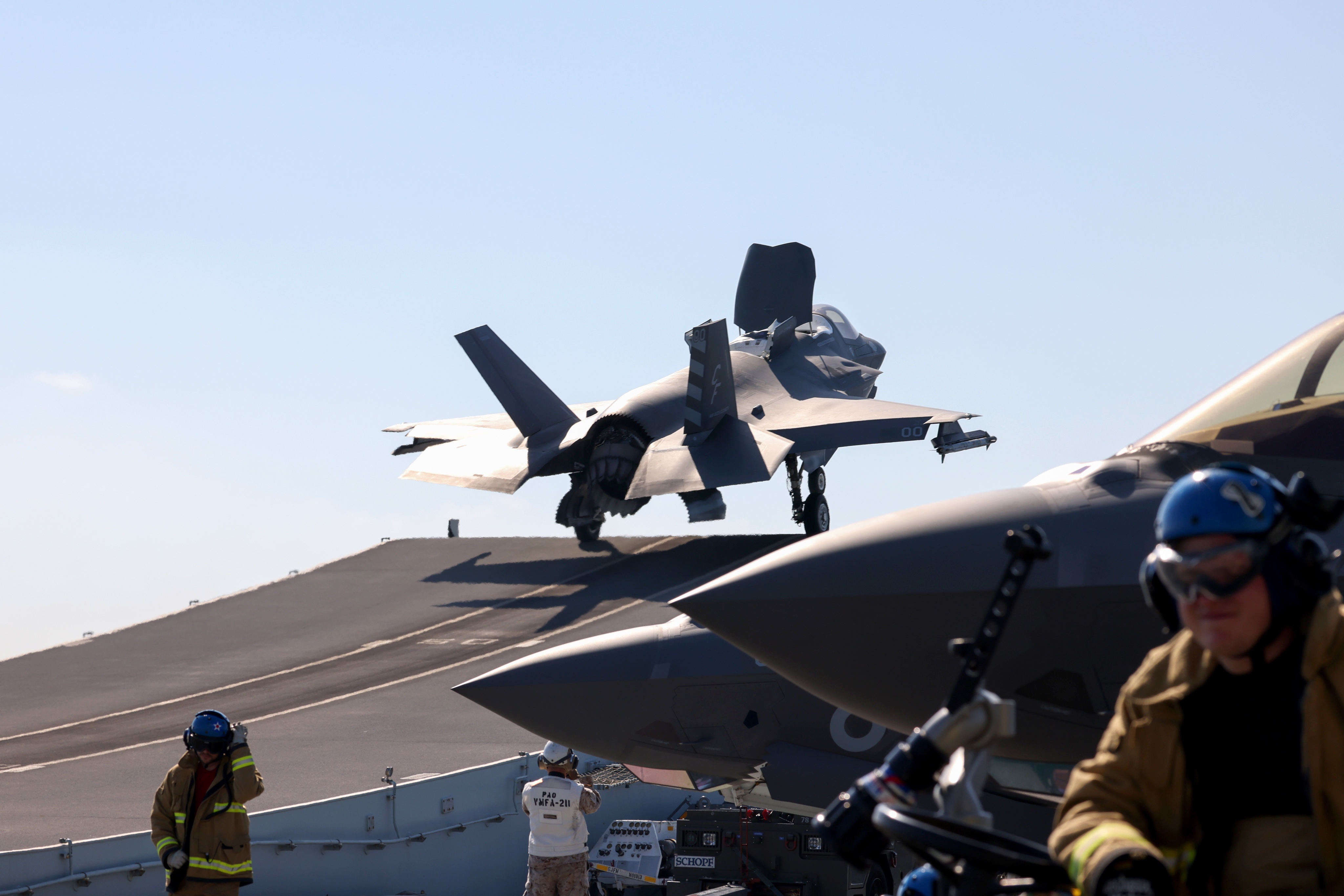In a freak incident, a US Navy F/A-18 Super Hornet fighter jet, costing about $60 million, sank into the Red Sea after it fell overboard from the American aircraft carrier USS Harry S. Truman.
This is not the first incident of an aircraft lost at sea. On an earlier occasion, a British F-35B jet plunged into the Mediterranean Sea as it left the runway of HMS Queen Elizabeth in November 2021.
The recent incident involving the F/A-18 Super Hornet took place when the Truman, on a deployment to the Red Sea, did an evasive maneuver in the face of fire from Houthi rebels. This sharp turn resulted in the aircraft going overboard.
“The F/A-18E was actively under tow in the hangar bay when the move crew lost control of the aircraft. The aircraft and tow tractor were lost overboard,” the US Navy said in a statement.
“Sailors towing the aircraft took immediate action to move clear of the aircraft before it fell overboard. An investigation is underway.” The US Navy said that its air wing “remains fully mission capable” despite the mishap.
The highly maneuverable Nimitz-class carriers like Truman are powered by two nuclear reactors and generally follow a “zig-zag” tactic to avoid a missile attack.
The Truman has come under repeated attacks from the Iran-backed Houthis, and in February, it collided with a merchant ship near Egypt. Another of its F/A-18 fighter jets was hit by friendly fire from the cruiser USS Gettysburg in the Red Sea in December 2024. Both pilots ejected safely.

When A British F-35 Plunged Into The Mediterranean
In a similar incident, a British F-35 fighter jet dropped off a launch ramp of the UK’s flagship aircraft carrier HMS Queen Elizabeth without ever getting airborne. Theories were floating at the time that something like a plastic rain cover may have been sucked into the aircraft’s engine leading to its failure.
The $100 million stealth jet was loaded with top-secret radars, sensors, and other advanced technology, making it imperative to recover its wreckage before enemies could gain access to the technology.
Russian aircraft had been shadowing HMS Elizabeth closely during its voyage. With its fleet of deep-diving special-mission submarines, as well as the deep-sea salvage ship Yantar, Russia had the means to recover parts of the jet.

Both pilots of the aircraft managed to eject before the aircraft plunged into the depths of the Mediterranean Sea.
The aircraft, as it plunged into the sea, remained afloat for a brief period alongside the carrier before it sank to the bottom of the sea. It was largely intact, but inverted on the seabed, at a depth of over 6,500 feet.
A number of “minor parts,” including the Martin Baker US16E ejection seat, were separated from the rest of the aircraft during the accident. They were later located near the main wreck, according to the report.
The wreckage of the F-35B was later recovered from the seabed, a mile away from the incident. The UK, Italy, and the US pooled their resources to locate the wreckage.
The UK approached the United States for assistance in retrieving the F-35B from the seafloor, with the US Navy providing salvage equipment located in Spain, including the Towed Pinger Locator 25 (TPL-25), which can detect the signal from an emergency beacon and pinpoint its position.
Two weeks were required to locate the wreck on the seafloor, followed by another week to bring it to the surface.

Many hurdles were faced in locating the F-35B. The investigation report explained that the sonar locator beacon fitted to the jet was not detected during the search and recovery.
Although chartered vessels equipped with remotely operated vehicles were able to find the jet on the seabed, the report warned that a failure of the beacon “could lead to a failure to locate a submerged aircraft in the future.”
The operation to salvage the aircraft was shrouded in secrecy and involved divers, miniature submarines, and inflatable bags to lift the Lightning II to the surface of the Sea. The remains of the aircraft were transported to an Allied port, from where they were then airlifted back to the UK.
Ten months after the crash, an investigation into the incident revealed that the accident was caused by the crew’s failure to remove a rain cover.
The interim report of the defense safety authority indicated that a ‘single engine intake blank’ was inside the engine intake as the plane took off. This blocked the airflow to the engine, thwarting its attempt to take off.
HMS Elizabeth was returning to Portsmouth following its 7-month maiden voyage to the Far East. It was involved in a hide-and-seek game with the Chinese Navy and was harassed by Russian aircraft during its deployment.




